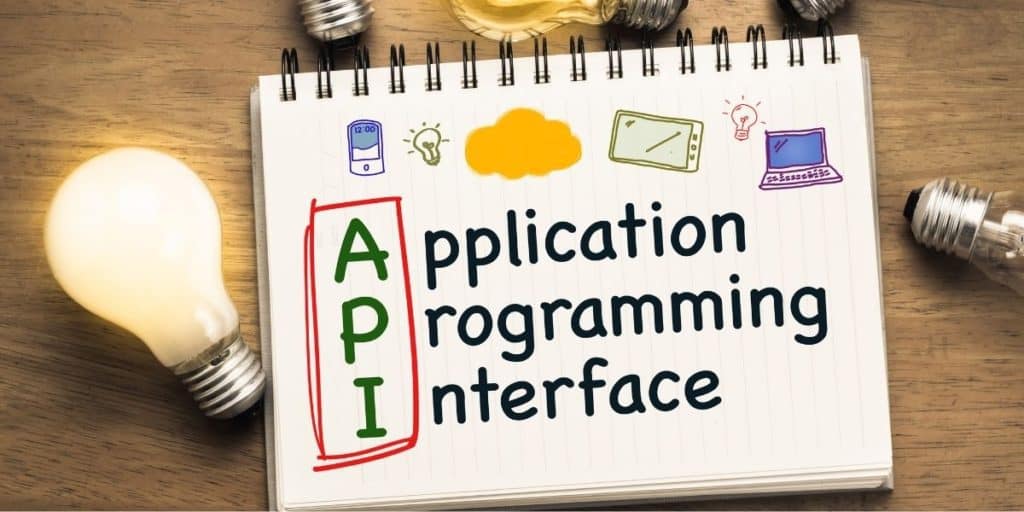Data engineering is becoming increasingly popular, and more and more people are wanting to become data engineers. But there is still a lot of confusion about what these professionals do and don’t do. Aspiring data engineers often wonder if they will have to learn to build APIs or not.
Data engineers build APIs in databases to allow data analysts and data scientists to query the data. They develop interface APIs to share data infrastructure that enables real-time analysis of data. Python is the primary language for creating these APIs and performing other data engineering tasks.
In this article, we will discuss everything you need to know about data engineering and APIs. We’ll also look at the programming languages data engineers use to build APIs and what other things they do as part of their job.
Important Sidenote: We interviewed numerous data science professionals (data scientists, hiring managers, recruiters – you name it) and identified 6 proven steps to follow for becoming a data scientist. Read my article: ‘6 Proven Steps To Becoming a Data Scientist [Complete Guide] for in-depth findings and recommendations! – This is perhaps the most comprehensive article on the subject you will find on the internet!
Table of Contents
Data Engineering and APIs
Data engineering is all about optimizing data for analysis. It is a highly technical job and requires strong coding skills. Data engineers’ responsibilities include extracting, cleaning, filtering, and storing large volumes of data.

Now, an API is a set of code that enables one software application to transfer data to and from another. You can guess from the definition that data engineers regularly build and use APIs, and you would be right.
Building APIs is not the core part of a data engineer’s job. However, they may build APIs as and when the project requires them to. By creating APIs in databases, data engineers allow data scientists and analysts to query the data. This means they can use the API to read the database and retrieve certain information from specific tables in the dataset.
Python is the most commonly used programming language for building APIs. Data engineers can use FastAPI to get an API up and running even within minutes. Using the Flask framework in Python is also easy. Flask allows you to build both REST APIs and Websocket APIs as Flask has a socket module too.
However, data engineers can also use a couple of other programming languages for building APIs, as we’ll discuss in the next section.
What Programming Languages Do Data Engineers Use To Build APIs?
There are four major programming languages used in data engineering, and all of them can be used to create APIs. Management tools like MuleSoft and Axway can also be utilized for this purpose. However, professionals usually prefer using a programming language to create their own simple APIs.
Data engineers are required to be skilled in at least one of the following languages so that they can build and use data APIs:
Python
Python has become the standard language for all things data. It is the most popular programming language among data engineers. They use it for everything, from extracting data to manipulating and storing it into databases.
The most popular option for building APIs in Python is in Flask. You can read this article by Towards Data Science to learn how to make a REST API using Python and Flask.
R
R is an alternative to Python that’s not used a lot in data engineering, even though you can perform many data engineering tasks with it. R is especially useful for machine learning applications, data visualization, and data analysis.
Plumber is an R package that allows you to build REST APIs with the programming language. For more information on creating an API using R and Plumber, check out this article.
Java
According to Cloud Academy, Java is the fourth most-trending tech skill for data engineers. This is because programs like Apache Hive and Apache Hadoop, which are essential for data engineering, are written in Java.
Spring Boot is the oldest and most widely used framework for building an API with Java. A quick google search will show lots of tutorials on building different APIs with Java and its frameworks.
Scala
Scala is a popular alternative to Python for data engineering. It is an extension of Java and runs on the same JVM, which means it is compatible with many Java libraries. Like Python, Scala is also used by several tech giants.
Play Framework is an open-source Scala framework that allows you to use RESTful APIs. Here is a tutorial on how to build simple APIs with this framework.
What Else Do Data Engineers Do, Other Than Building APIs?
It’s essential to fully understand what data engineers do before you decide to study for the job. Apart from building APIs, they perform several tasks related to data filtering, manipulation, and storage.
As we’ve discussed, data engineers are the backbone of data science. They optimize large volumes of data for analysis. Without them, data scientists won’t have organized datasets to analyze and build machine learning models.
Here are a few tasks data engineers perform other than building APIs:
Building Data Pipelines
Collecting data from various sources is a big part of a data engineer’s job. They often build data pipelines to accomplish this. A data pipeline is a set of instructions to extract data from multiple sources.
Data engineers build pipelines to perform a bunch of data-related tasks automatically. For example, you may set actions like:
- Take X columns from this database.
- Sort them according to these values.
- Substitute NAs with the median.
- Merge them with these other columns obtained using this API.
- Dump them in this final database.
Managing Databases
Database management is at the core of data engineering. That’s why SQL is the most sought skill for data engineering roles in the Cloud Academy job matrix. Every data engineer needs to be proficient in SQL to be able to manipulate databases and make information useful for data scientists.
Apart from SQL, data engineers also handle NoSQL databases, which are cost-efficient, flexible, and scalable. They filter out unnecessary data, organize it, and make it suitable for analysis. Transfer of data from one system to another is also handled by data engineers.
Data Warehousing
Data warehousing is another vital part of a data engineer’s job. We’re generating large amounts of data every single day. So data engineers need to know how to safely store this data so that they can later work on it. Data warehouses simplify a company’s analysis, reporting, and decision-making by serving as the single source of raw, unstructured data.
Data engineers work with data lakes, which are huge storage and incoming streams of unstructured data. Redshift, Panoply, and Hive are some data warehousing solutions that these professionals need to be familiar with.

Working With Stakeholders
Data engineers work with other team members such as data analysts, developers, and machine learning engineers. They maintain a healthy relationship with them and collaborate to gather requirements and define the scope of new projects.
Sometimes, data engineers also have to perform analysis on the data, though it largely depends on the company. If that happens, they share their findings with stakeholders and develop ideas to solve business problems.
Author’s Recommendations: Top Data Science Resources To Consider
Before concluding this article, I wanted to share few top data science resources that I have personally vetted for you. I am confident that you can greatly benefit in your data science journey by considering one or more of these resources.
- DataCamp: If you are a beginner focused towards building the foundational skills in data science, there is no better platform than DataCamp. Under one membership umbrella, DataCamp gives you access to 335+ data science courses. There is absolutely no other platform that comes anywhere close to this. Hence, if building foundational data science skills is your goal: Click Here to Sign Up For DataCamp Today!
- IBM Data Science Professional Certificate: If you are looking for a data science credential that has strong industry recognition but does not involve too heavy of an effort: Click Here To Enroll Into The IBM Data Science Professional Certificate Program Today! (To learn more: Check out my full review of this certificate program here)
- MITx MicroMasters Program in Data Science: If you are at a more advanced stage in your data science journey and looking to take your skills to the next level, there is no Non-Degree program better than MIT MicroMasters. Click Here To Enroll Into The MIT MicroMasters Program Today! (To learn more: Check out my full review of the MIT MicroMasters program here)
- Roadmap To Becoming a Data Scientist: If you have decided to become a data science professional but not fully sure how to get started: read my article – 6 Proven Ways To Becoming a Data Scientist. In this article, I share my findings from interviewing 100+ data science professionals at top companies (including – Google, Meta, Amazon, etc.) and give you a full roadmap to becoming a data scientist.
Conclusion
Data engineering is the backbone of data science. Data engineers perform various data-related tasks like extracting data from multiple sources using data pipelines and cleaning it to make it suitable for analysis. This may also include building APIs for business intelligence analysts and other professionals to access relevant information from databases.
Date engineers mostly use Python with Flask for building and using APIs. However, they can also use alternative languages and frameworks like Java with Spring, Scala with Play, and R with Plumber.
They also build automated data pipelines, manage databases, use data warehousing solutions, and collaborate with other team members.
BEFORE YOU GO: Don’t forget to check out my latest article – 6 Proven Steps To Becoming a Data Scientist [Complete Guide]. We interviewed numerous data science professionals (data scientists, hiring managers, recruiters – you name it) and created this comprehensive guide to help you land that perfect data science job.
Affiliate Disclosure: We participate in several affiliate programs and may be compensated if you make a purchase using our referral link, at no additional cost to you. You can, however, trust the integrity of our recommendation. Affiliate programs exist even for products that we are not recommending. We only choose to recommend you the products that we actually believe in.
Recent Posts
Data science has been a buzzword in recent years, and with the rapid advancements in artificial intelligence (AI) technologies, many wonder if data science as a field will be replaced by AI. As you...
In the world of technology, there's always something new and exciting grabbing our attention. Data science and analytics, in particular, have exploded onto the scene, with many professionals flocking...
